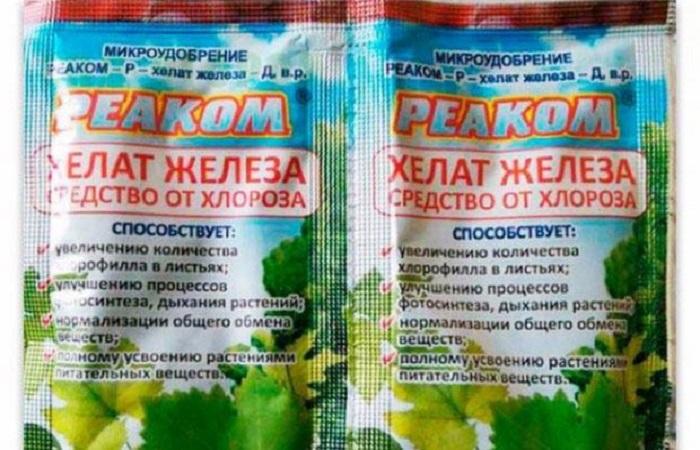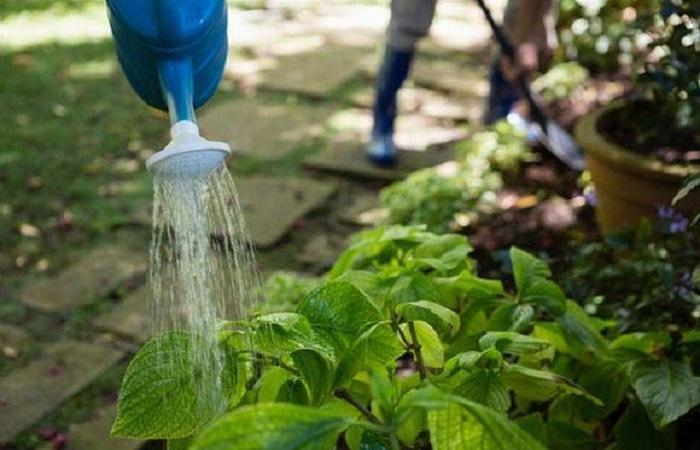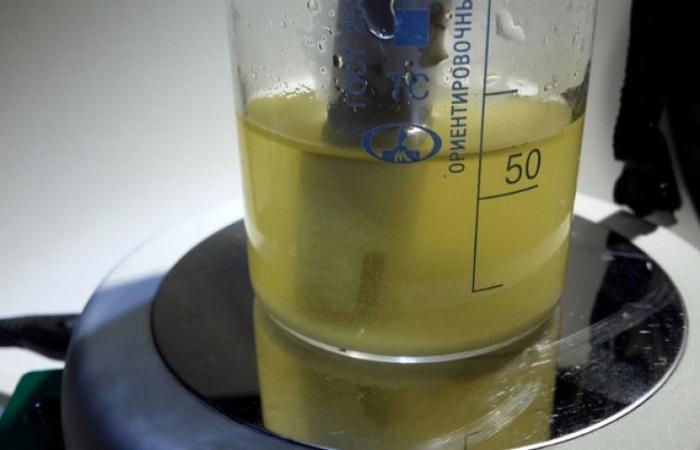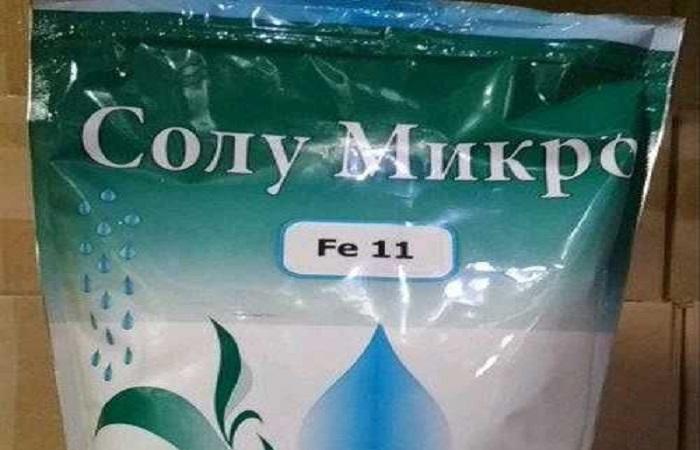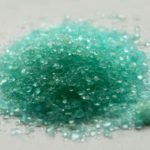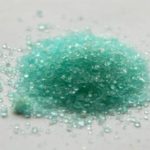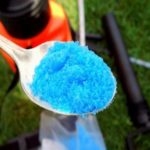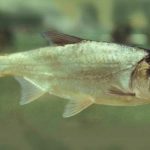Microelements in chelated form are often used to fertilize plants in agriculture; these are one of the modern fertilizers that have a quick and long-lasting effect on crops. Let's look at the advantages and disadvantages of iron chelate, how to make it yourself, how to use it for root and foliar feeding of outdoor and indoor plants, and how to treat chlorosis. Fertilizer compatibility, storage rules, analogues.
What are chelates
Microfertilizers in this form are produced by many agrochemical enterprises. Preparative form – powder or liquid concentrate. The share of iron is 11%. The fertilizer is characterized by stability, lack of toxicity when applied foliar, and effectiveness when used in hydroponic systems and drip irrigation systems.
Iron chelate can be used to eliminate chlorosis, feed seedlings and adult plants. In fed plants, the production of chlorophyll increases, since iron is necessary for this process, and the productivity of photosynthetic processes improves. Microfertilizer can be used in open beds and in greenhouses; it is suitable for any garden crops.
The fertilizer is equally effective on many types of soil and in regions with different climatic conditions; its effectiveness is 2-10 times higher compared to complex fertilizers that contain the element in other forms. It is recommended for use on carbonate soils, where it is practically the only effective microfertilizer.
Microfertilizer iron chelate increases the yield of crops and improves the quality of products obtained from them. Optimizes nutrition, which increases the supply of nutrients to plants. This ensures an increase in yield, and the percentage of carbohydrates, proteins and vitamins in fruits increases.
The effectiveness of iron in chelated form is explained by the fact that it migrates more actively and faster in plants. The element can remain in this form until the chelate complex is destroyed. Under soil conditions, this occurs approximately at the rate at which plants absorb iron from it. Therefore, they feed on the element in as much quantity as needed.The chelate complex breaks down into natural and non-toxic substances, releasing water and carbon dioxide, which are absolutely not harmful to either the soil or plants.
Pros and cons of using it as a fertilizer
Advantages of the drug compared to other fertilizers containing iron:
- quickly restores the amount of element needed by plants;
- combines well with agrochemicals and mineral fertilizers;
- completely dissolves in water and is completely absorbed in plant cells;
- resistant to destruction by bacteria;
- non-toxic;
- After fertilizing with iron chelate, its content in fruits increases, which is why their nutritional value increases.
Disadvantages: if the dosage is incorrect, there may be an overfeeding of iron, which has the same adverse effect on plants as a lack of this element.
DIY making
Making iron chelate is a simple process. You will need 2 reagents (iron sulfate, citric acid) and water. Cooking process:
- Dissolve 8 g of vitriol in 2 liters of warm water.
- In the same volume of water, but in a separate container, dissolve 5 g of acid.
- Pour the vitriol solution into the acid solution, stirring slowly and constantly.
- After this, pour 1 liter of plain water into the solution.
You should get 5 liters of the drug. It cannot be stored; it is suitable for use only after preparation. The liquid should be clear and orange. If more solution is needed, you need to repeat everything again, but do not pour water and reagents into the old solution.
Instructions for use
Iron chelate can be fertilized by applying it under the roots or spraying the plants with it on the leaves. Let's look at different ways to use microfertilizers for garden and indoor plants.
Foliar treatment
Dissolve 5 g of powder in 5 liters of water. For fruits and vegetables per 1 sq. m. 1 liter of solution is consumed. Spraying for trees and shrubs is carried out 1st time during bud break, 2nd time – after 2 weeks. Spray vegetables 1st time when they reach the stage of 3-4 leaves, 2nd time - before they begin to bloom.
Root application
For irrigation, use a solution of the same concentration, but per 1 square meter. m. consume 2 liters. Watering is carried out in the initial stages of plant growth, subsequent waterings - after 2 weeks.
Use for indoor plants
Flowers are usually grown in low light conditions, so their need for iron is somewhat greater than that of garden plants. It is also necessary to apply this fertilizer to flowers that grow in acidic soil, for example, orchids. The concentration of the solution is 1 g per 1 liter, the consumption is until the clod of earth is wetted.
Treatment of chlorosis
Chlorosis is a symptom of severe iron deficiency. It needs to be treated quickly, so it is better to use foliar fertilization. Iron from a solution on the leaves begins to act within 24 hours after spraying, whereas after watering it takes 3 days. The concentration for the treatment of chlorosis is 2 times higher than with conventional feeding. The number of feedings with chelate is until the symptoms disappear with an interval of 2 weeks.
Precautionary measures
Iron chelate is non-toxic to humans and does not irritate the skin. To work with it safely, you need to wear gloves, a regular respirator and goggles. After work, just wash your hands and face with soap.Wash off the solution if it gets on your hands or other parts of the body. In case of accidental contact with the eyes or stomach, rinse the eyes with water or do a gastric lavage by taking activated carbon tablets and drinking plenty of clean water.
What is compatible with?
The acidity of the iron chelate solution is neutral. It can be used together with chemicals and fertilizers. But when combined in a hydroponic solution, the chelate may precipitate because the components are taken in a larger dosage than usual. Therefore, it must be added to the solution separately.
Storage rules and expiration date
Iron chelate is stored for 1 year, during which time it must be kept in its original packaging, which is tightly closed. The substance should not be affected by moisture and solar radiation. The room for the preparation is chosen to be dry so that it does not become damp. Storage temperature – in the range 0…+30 °C. Do not allow the liquid to freeze.
Keep iron chelate microfertilizer away from animals and children. Do not place food, water containers, or animal feed in its immediate vicinity to avoid any possibility of the substance getting on them. The prepared solution must be used immediately; it can be stored for only a few hours.
Analogues of the product
Iron in chelated form is contained in fertilizers that bear the same name. They are produced by different manufacturers. To feed plants, you can use the preparations “Solu Micro Fe D 11”, “Microvit K-1”, “Solu Micro Fe 13”.Iron is contained in many mineral fertilizers, but not in chelated form, so this element is not as accessible as from the chelate.
Iron chelate is used to feed plants of any agricultural type with this element. The fertilizer is much more effective than conventional mineral complex preparations because the chelated form allows the element to be more available for entry and absorption by plants. The product is used for planned application, when you only need to feed crops, but is especially recommended for the rapid treatment of chlorosis caused by insufficient iron supply to plants. In this case, iron chelate is the best choice among the possible options.

